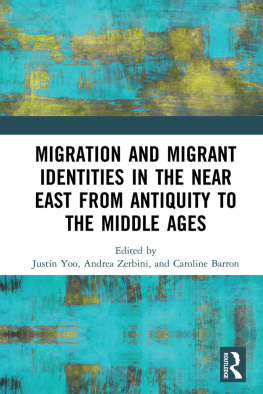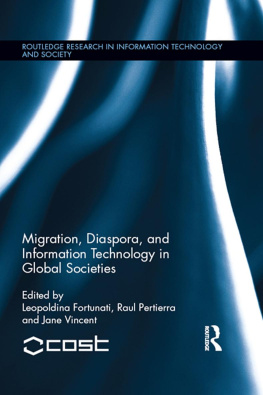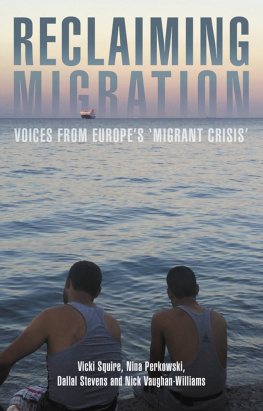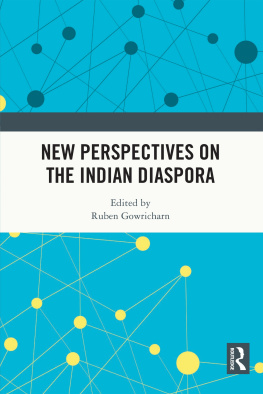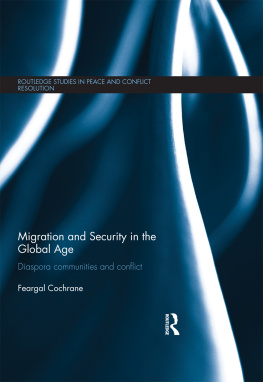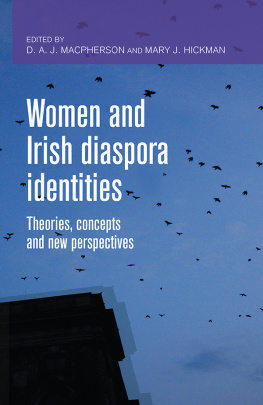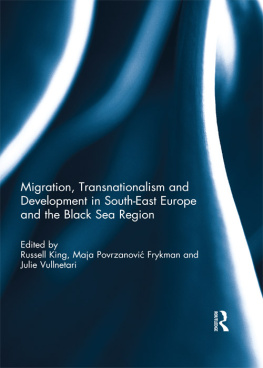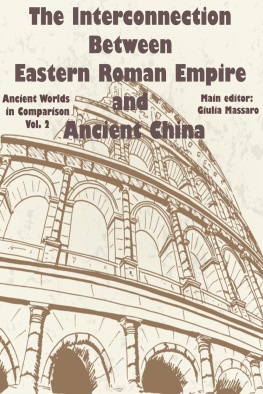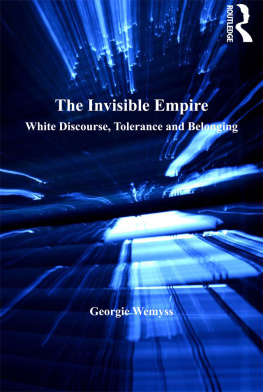Migration and Migrant Identities in the Near East from Antiquity to the Middle Ages
This book brings together recent developments in modern migration theory, a wide range of sources, new and old tools revisited (from GIS to epigraphic studies, and stable isotope analysis to the study of literary sources), and case studies from the ancient eastern Mediterranean that illustrate how new theories and techniques are helping to give a better understanding of migratory flows and diaspora communities in the ancient Near East. A geographical gap has emerged in studies of historical migration as recent works have focused on migration and mobility in the western part of the Roman Empire and thus fail to bring a significant contribution to the study of diaspora communities in the eastern Mediterranean. Bridging this gap represents a major scholarly desideratum, and, by drawing upon the experiences of previously neglected migrant and diaspora communities in the eastern Mediterranean from the Hellenistic period to the early mediaeval world, this collection of essays approaches migration studies with new perspectives and methodologies, shedding light not only on the study of migrants in the ancient world but also on broader issues concerning the rationale for mobility and the creation and features of diaspora identities.
Justin Yoo is a doctoral candidate in the Department of Classics at Kings College London, UK, where he is writing a thesis on Greek migration, trade, and interaction with Egypt during the seventh to fourth centuries bce . He has an MA in Egyptian Archaeology from the Institute of Archaeology, University College London, UK, and a BA in Anthropology, Arabic, and French from the City University of New York, USA.
Andrea Zerbini is a Research Associate on the Endangered Archaeology in the Middle East and North Africa (EAMENA) project based at the University of Oxford, UK. Prior to this, he held a CBRL Visiting Fellowship at the British Institute in Amman, Jordan, and a Fondation Fyssen Postdoctoral Fellowship affiliated with the CNRS team Archologies et Sciences de lAntiquit based at the Universit Paris XNanterre, France. He holds an MA in Ancient History from University College London and a PhD in Classics from Royal Holloway, University of London, UK. From May 2018, he has assumed the role of Assistant Director of CBRLThe British Institute in Amman.
Caroline Barron is a Research Fellow on the ERC-funded project Judaism and Rome (http://judaism-and-rome.cnrs.fr/), based at CNRS at the Aix-Marseille Universit, France. She earned her undergraduate degree in English and Latin at the University of Leeds, UK, and then spent several years living in Rome and working in cultural heritage. She returned to London in 2008 to pursue an MA in Classics at Kings College London, UK, after which she earned her PhD, also at Kings, in 2015 under the supervision of Professor Henrik Mouritsen. Caroline has most recently worked on the publication of two digital editions of ancient inscriptions: Inscriptions of Roman Tripolitania and IOSPE: Ancient Inscriptions of the Northern Black Sea. In January 2019 she will join Birkbeck, UK, as a Leverhulme Early Career Fellow.
Migration and Migrant Identities in the Near East from Antiquity to the Middle Ages
Edited by Justin Yoo, Andrea Zerbini, and Caroline Barron

First published 2019
by Routledge
2 Park Square, Milton Park, Abingdon, Oxon OX14 4RN
and by Routledge
711 Third Avenue, New York, NY 10017
Routledge is an imprint of the Taylor & Francis Group, an informa business
2019 selection and editorial matter, Justin Yoo, Andrea Zerbini, and Caroline Barron; individual chapters, the contributors
The right of Justin Yoo, Andrea Zerbini, and Caroline Barron to be identified as the authors of the editorial material, and of the authors for their individual chapters, has been asserted in accordance with sections 77 and 78 of the Copyright, Designs and Patents Act 1988.
All rights reserved. No part of this book may be reprinted or reproduced or utilised in any form or by any electronic, mechanical, or other means, now known or hereafter invented, including photocopying and recording, or in any information storage or retrieval system, without permission in writing from the publishers.
Trademark notice: Product or corporate names may be trademarks or registered trademarks, and are used only for identification and explanation without intent to infringe.
British Library Cataloguing-in-Publication Data
A catalogue record for this book is available from the British Library
Library of Congress Cataloging-in-Publication Data
Names: Yoo, Justin, editor. | Zerbini, Andrea, editor. | Barron, Caroline M., editor.
Title: Migration and migrant identities in the Near East from antiquity to the Middle Ages/edited by Justin Yoo, Andrea Zerbini, and Caroline Barron.
Description: Milton Park, Abingdon, Oxon; New York, NY: Routledge, 2018. | Includes index.
Identifiers: LCCN 2017035535 (print) | LCCN 2017037063 (ebook) |
ISBN 9781351254762 (ebook) | ISBN 9781351254755 (Adobe reader) |
ISBN 9781351254748 (ePUB) | ISBN 9781351254731 (Mobi/Kindle) |
ISBN 9781472450661 | ISBN 9781472450661q (hardback : alk. paper) |
ISBN 9781351254762q (ebook)
Subjects: LCSH: Human beingsMigrationsHistoryTo 1500. | Social sciencesEmigration and immigration. | Stable isotopesAnalysis. | Middle EastHistory.
Classification: LCC GN370 (ebook) | LCC GN370 .M53 2018 (print) | DDC 304.8dc23
LC record available at https://lccn.loc.gov/2017035535
ISBN: 978-1-4724-5066-1 (hbk)
ISBN: 978-1-351-25476-2 (ebk)
Typeset in Times New Roman
by Apex CoVantage, LLC
Contents
CAROLINE BARRON, ANDREA ZERBINI, AND JUSTIN YOO
Part I
Migration theory and historiography
CLAUDIA MOATTI
RACHEL MAIRS
Part II
Documenting migrant flows
L. E. TACOMA AND R. A. TYBOUT
ANDREA U. DE GIORGI
HAMISH CAMERON
GETHIN REES, NICHOLAS DE LANGE, AND ALEXANDER PANAYOTOV
Part III
Migration and physical anthropology
TRACY PROWSE, ROBERT STARK, AND MATTHEW EMERY
MEGAN A. PERRY
Part IV
Migrant identities
ANNA COLLAR
ROCCO PALERMO
ITAMAR TAXEL
JAN VANDEBURIE
Part V
Epilogue
ELENA ISAYEV
An edited volume is nothing more than the sum of its parts. In this respect, we have been fortunate enough to have had a coterie of highly skilled dedicated authors who have been generous and forthcoming with their expert research. We remain indebted to them for their participation.
Along the way, we have received encouragement and advice from many friends, peers and mentors too many to name here. But we are especially grateful to, in no particular order, Richard Alston, Greg Woolf, Dominic Rathbone, Hugh Bowden, Carol Palmer, Christopher Knsel, and Carl Walsh for their supportive advice.
Our initial forays into the topic of Near Eastern migration in the ancient world arose from an investigative panel session that was originally conceived for the Theoretical Roman Archaeology Conference (TRAC) that was held at Kings College London in April of 2013. We remain grateful to the organisers of TRAC 2013 especially the head organisers, John Pearce and Jason Lundock for allowing our panel titled

